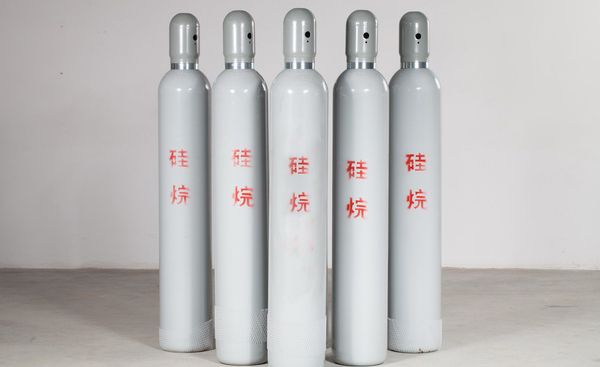Silane
Release Date: 2022-06-16 11:17:37 Visit: 216

Silane is a colorless, air-reactive and suffocating gas. The gas usually ignites in contact with air and emits a very thick white fumes of amorphous silica. Its primary health hazard is that its spontaneous flames can cause severe thermal burns, which can be fatal if severe. If a flame or high temperature acts on one part of the silane cylinder, the cylinder will explode before the safety valve is activated. If the silane is released at too high pressure or too fast, it will cause a delayed explosion. Leaked silane can be very dangerous if it does not spontaneously ignite. Do not approach it. Personnel handling emergencies need personal protective equipment and fire protection appropriate to the situation. Do not attempt to extinguish the fire until the air supply is shut off.
Product Description
Silane gas is an indispensable material in solar cell production because it is an efficient way of attaching silicon molecules to the cell surface. In an environment above 400°C, silane gas decomposes into gaseous silicon and hydrogen. After the hydrogen is burned, what is left is pure silicon. In addition, silane gas can be said to be ubiquitous. In addition to the photovoltaic industry, there are many manufacturing plants that use silane gas, such as flat panel displays, semiconductors, and even coated glass production plants.
Silane Considerations
The workplace where silane is used should be ventilated and the indoor air should be kept dry. The silane device should be strictly sealed to avoid contact with air and moisture. For this reason, the air device should be evacuated with an inert gas to replace the air inside before use. In this way, the replacement and evacuation are repeated, and the air in the system must be removed. and moisture. After the device is used, the silane in the cleaning system should also be replaced with an inert gas. Leaks can be detected with a helium leak detector. When a small amount of silane leaks, it can also be found from the folding of the silicon oxide powder. Cylinders should be stored in a cool, dry and well-ventilated place, away from heat sources and oxidants such as chlorine and bromine. The workplace should be equipped with adequate protective equipment and emergency supplies. Silane itself is non-corrosive, and carbon steel, stainless steel, copper, brass, Monel, corrosion-resistant nickel-based alloys can be used. Also available are polytetrafluoroethylene, polychlorotrifluoroethylene polymers, nylon, chlorotrifluoroethylene resin, polyethylene, polyester, and quartz glass. Lead, rubber, fat, lubricating oil, glass cannot be used. Any flammable organic polymer materials should be avoided. When a large amount of silane leaks. It was about to catch fire, so there was no way to put it out with a fire extinguisher. However, the fire can be controlled so that the fire does not spread to the surrounding. The radiant heat during combustion is not too high, so the valve should be closed as much as possible to stop the outflow of gas. Use white snow stone powder or graphite powder to extinguish the flame. The waste gas can be absorbed by water or alkali, or be captured by special filter after burning into SiO2 in special burner. Store in a cool, ventilated warehouse. Keep away from fire and heat sources. The storage temperature should not exceed 30℃. It should be stored separately from flammable (combustible) materials and oxidants, and should not be stored together. The storage area should be equipped with leakage emergency treatment equipment. Closed operation, local exhaust. Operators must undergo special training and strictly abide by the operating procedures. It is recommended that operators wear filter respirators (half masks). Keep away from flammable and combustible materials. Prevent gas leakage into workplace air. Avoid contact with oxidants. When handling, lightly load and unload to prevent damage to cylinders and accessories. Equipped with leakage emergency treatment equipment.





